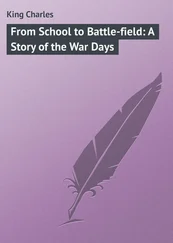“I will never forgive them. I will avenge him,” says one of his Crimean buddies. He is a very young person. In his platoon, out of thirty-five men only five remain. He has started abusing alcohol, most probably due to the lack of both proper support and an adequate number of psychologists. Just like one of his five comrades.
“I feel pain here, in my heart. This is really horrible,” he tells me, swaying a little on his feet.
A desire to fight for the motherland is essentially the only motivation of the Donbasers. Their basic pay, promised by the Interior Ministry, amounts only to 1,248 hryvnas, or 47 dollars a month. If you consider rising prices and the declining value of money, every day they earn less and less. Anyway, their money exists only as an idea because nobody has ever received any wages. The guardsmen from the battalion joke that if one day they get all the overdue money, they will at least notice they have received something. So where does Donbas get its money from? In the beginning they were supported by the pro-Ukrainian oligarch Igor Kolomoyskiy. Now they live off donations from people who can send them from 10 to 1,100 hryvnas. Other people provide food. Thanks to all of this Donbas has uniforms, equipment, and provisions.
Theoretically, each guardsman should be provided with proper weapons, but so far the government has not fulfilled its promise. They captured their first weapons in April when they attacked a checkpoint of pro-Russian insurgents. At that time they were a paramilitary organization and they were equipped with automatic rifles. They still don’t have enough weapons, not to mention heavy equipment. Donbas has at its disposal several armored personnel carriers and antiaircraft guns that can also be used to fight light armored divisions.
War—The Time of the Radicals
Although battalion Donbas has its own political aspirations, it was not created around any particular ideology. This is not true of two other volunteer battalions, Azov and Right Sector. Their roots are in the Maidan. That was where a coalition formed of diverse radical organizations. They wanted to separate themselves from other demonstrators: “liberals, lefties and anarchists.” The coalition included such organizations as Patriots of Ukraine, White Hammer, the Ukrainian National Assembly/Ukrainian People’s Self-Defense (UNA-UNSO) and the Social-National Assembly. The coalition of organizations became really well known in January 2014 when they stormed the Ukrainian Parliament, launching several days of clashes with police. From the very beginning violence was one of their means to achieve political goals. In the circumstances of the civil war, creating an independent battalion was a natural process. Battalion Azov is rooted in the Social-National Assembly and now is subordinate to the Interior Ministry. You can just look at their logo to realize that you are dealing with an extremely radical group. The logo shows a Wolfsangel and a black sun. Both symbols are used by neo-Nazi movements. After the Azov unit was created, one of my friends joked that, compared to them, Right Sector was almost liberal. It is worth noting however that Azov was also joined by people without any political views or even ideologically “hostile” to neo-Nazis. Even some anarchists fight in its ranks.
It is August 2014. We accompany the soldiers of battalion Donbas from Kurakhove near Donetsk to the base located a few dozen kilometers from Ilovaisk. In the “Ilovaisk encirclement,” Ukrainian volunteer battalions were surrounded by separatist forces backed by Russians in the form of Russian soldiers and Russian military equipment. After their initial victories and having captured at least half of Ilovaisk, Ukrainian units were suddenly isolated and encircled. Eight battalions got stranded in one of the schools on the city outskirts. There were four journalists with them, including Max Levin, a photographer from the Internet magazine Levyj Bereg (Left Bank) . I rely on his report below.
They were constantly shelled by separatist artillery. They tried to break free from the encirclement many times but unsuccessfully, although the separatists promised them safe passage. Each time they would meet with fire, even when the promised corridor was used to carry wounded soldiers.
Four journalists traveling in such a column narrowly escaped with their lives. In the end they separated from the column, went off on their own, and managed to reach the areas controlled by Ukrainian forces. Their entire car was perforated with bullets and shrapnel.
According to the Ukrainians, at least two hundred Ukrainian guardsmen and soldiers were killed in the battle of Ilovaisk. However, according to unofficial sources this number may exceed one thousand. In October the separatists were still holding ninety-eight prisoners from battalion Donbas, the main fighting force in Ilovaisk. Many of them had been exchanged earlier for captive separatists.
I go with a group that will try to rescue the Ukrainians from the encirclement. In a supporting unit there is Ilya Bohdanov, a Russian. He is waiting for the Ukrainian passport that should come very soon. He used to be an agent of Russia’s intelligence service. When he realized that what Putin was doing was incomprehensible, he took time off and came to Ukraine. There, he was thoroughly checked by the Security Service of Ukraine and was allowed to join the battalion. In Russia a military court has taken charge of his case. This former agent of the FSB is a very calm, quiet person. He talks very little and remains in the background. Why did he take the Ukrainian side?
“I am a National Socialist,” he declares.
“But why do you support Ukraine? After all, the extreme right is with Putin,” I ask in disbelief.
“Those people are imperialists. The right is very divided. I am a National Socialist and I want a strong, white, and European Ukraine.” The former FSB agent claims that only thanks to such a Ukraine will Putin’s regime be destroyed.
Dmytro Korchynsky, a leader of the Brotherhood, shares his views. That’s why he is doing all he can to ensure that the revolution that started in Ukraine reaches the very center—that is, Moscow. When during the Maidan protests the supporters of the Brotherhood wanted to attack the Presidential Administration building with a bulldozer, they were dubbed provocateurs and Korchynsky fled the country. Individual members of the Brotherhood participated in the Maidan, but they never revealed their party affiliation.
“I left my home on December 1 and I came back only in February,” says Dmytro Linko, one of the battalion’s soldiers.
The Brotherhood members are Russian Orthodox national anarchists. Their logo displays a labarum . It is a symbol of the Roman legions, thanks to which the emperor Constantine was supposed to conquer his enemies. The main slogan on their website says: “Down with democracy! Let freedom live.” Earlier they had the Unit of Jesus Christ, and now they are forming the first Christian Battalion of Saint Mary. The separatist units from the Russian Orthodox Army will have worthy opponents.
9. THE STORY OF A MISSILE
ON JULY 17, about 4:20 in the afternoon Ukrainian time, air traffic control lost contact with Malaysian Airlines flight number MH17. Soon afterwards video footage emerged on the Internet. It was shot in the town of Torez, thirty kilometers from the Ukrainian-Russian border. You can see a white trail in the sky and then a huge cloud of black smoke appearing on the horizon. There were 298 people aboard the Boeing 777, including eighty children. Nobody survived.
More or less at the same time the controllers lost contact with the airplane, separatists put out information on their websites and on Russian social media about their great success. They claimed to have shot down a Ukrainian An-26, a military transport aircraft. When it turned out that it was a civilian plane, the posts were immediately deleted.
Читать дальше

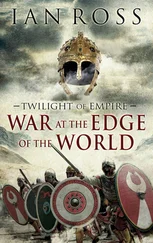
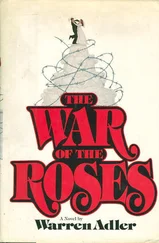
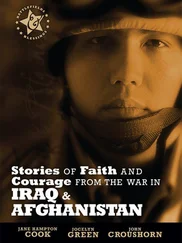
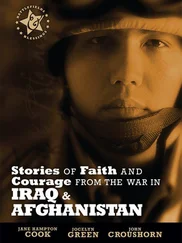

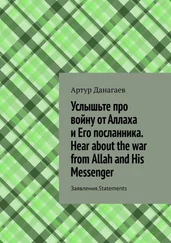

![Theresa Cheung - The Dream Dictionary from A to Z [Revised edition] - The Ultimate A–Z to Interpret the Secrets of Your Dreams](/books/692092/theresa-cheung-the-dream-dictionary-from-a-to-z-r-thumb.webp)



